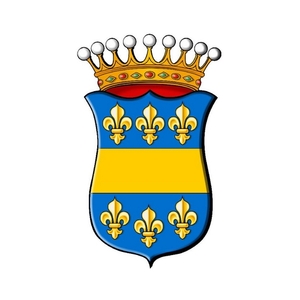House of Bruntál & Vrbno
Hynek of Bruntál (d. 1596) and his sons cared about Helfštýn, and soon began redevelopment of the castle, as well as construction of a new chateau in Lipník.
At Helfštýn, the House of Bruntál & Vrbno focussed on rebuilding the inner core of the castle into a Renaissance residence. The old castle palace, which no longer corresponded to the idea of comfortable modern living, was demolished together with a part of its original Gothic fortification, and a monumental Renaissance palace was built in the vacant space, sharply contrasting the extensive system of late-Gothic fortifications that surrounded it. Although the massive building is now in ruins, it is still obvious that it was built with a sense of luxurious interior accessories and exterior ornamentation. The new palace at Helfštýn was built between 1597 and 1605, while the chateau in Lipník was finished four years later. The conversion by the House of Bruntál & Vrbno gave Helfštýn its final appearance, yet it never lost its fortress status.
The last owner of the castle and domain from the House of Bruntál & Vrbno was George of Bruntál & Vrbno. A Protestant and committed Moravian Estates politician, he actively participated in the Bohemian Revolt starting in 1619, gaining a prominent position among the insurgents. He became one of the Estates’ directors and the Moravian justice, and he had to expect harsh punishment from the emperor after the Battle of White Mountain. George of Bruntál & Vrbno was captured in the summer of 1621 and imprisoned at Špilberk Castle in Brno, but did not survive long there. He died in 1622, and the Helfštýn domain (together with the Hranice domain) was confiscated and obtained from Emperor Ferdinand II by Olomouc Bishop Franz von Dietrichstein.
